Quality and Quantity Lesson Plan

Lesson Plan Mindmap for Quality and Quantity – Click to Enlarge
CLICK ICONS TO JUMP DIRECTLY TO EACH SUBJECT ON THIS PAGE








QUALITY AND QUANTITY LESSON PLAN
This page is a free-shared lesson plan archive for teaching all educational subjects within the context and theme of “Quality and Quantity”. It is purposed for use in community education environments, homeschool environments, traditional schooling environments, or as a supplemental and fun addition to any education program. As part of the complete Education for Life Program, this lesson plan is specifically designed to work in conjunction with the other components: Foundations of Teaching, Curriculum, Teaching Strategies, Learning Tools and Toys, Evaluation Model, and The Ultimate Classroom. If you’d like to learn how all these components work together, click here. Click here for the specifics focused on just using the lesson plans:
CLICK HERE FOR A DETAILED TUTORIAL ON HOW TO USE THIS LESSON PLAN
NOTE: The colors are provided as a possible linear progression (red/easiest to violet/most challenging) for people that might prefer a more linear structure. Our core philosophy, however, is that through creativity every color can be made easy or challenging for any learning level.
RELATED PAGES (mouse-over for descriptions and click for complete pages)
EDUCATION OVERVIEW | HOW TO USE THIS COMPONENT | OUR OPEN SOURCE PURPOSE
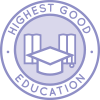
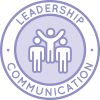
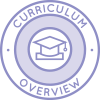
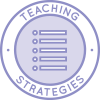
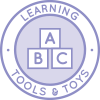
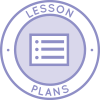
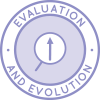
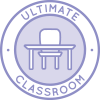
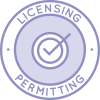

WAYS TO CONTRIBUTE TO EVOLVING THIS EDUCATION PROGRAM WITH US
SUGGESTIONS | CONSULTING | MEMBERSHIP | OTHER OPTIONS
A NOTE ABOUT ALL ONE COMMUNITY LESSON PLANS
The One Community lesson plans are intentionally designed for use in ANY educational environment and with ALL educational, cultural, religious/spiritual, and philosophical approaches to teaching and learning. They are designed without an ideological approach and specifically so they can be adapted to include the views, preferences, methodologies, and/or ideologies preferred by different parents and teachers.
For maximum flexibility and adaptation, they are also designed to be combined to teach multiple subjects at the same time. Doing this increases the creativity, effectiveness, and fun of your learning environment. Once we are on the property and operating our version of the complete school and Education for Life program, we will be adding video examples of how to combine the lessons. In the meantime, visit the Teaching Strategies page for a list of suggestions.
ARTS AND TRADES
CLICK HERE FOR THE COMPLETE SUBJECT OUTLINE FOR ARTS & TRADES
 | TEACHING ARTS AND TRADES WITHIN THE CONTEXT OF QUALITY AND QUANTITY |
 | The Arts- Create a small piece* using Lego or another block building system. Then count how many blocks of each color were used and note this on a piece of paper.
- Find a story you like and learn to tell it in an interesting way*. How many pages is your story? Vary your tone of voice, speed of reading, etc., and see if other people notice.
- Paint a picture* to illustrate what the difference between quality and quantity means to you.
- Create two ceramic pieces*, one using a small quantity of high-quality material and another using a large quantity of low-quality material. Using the results, reflect on which is more important to you in creating art, the quality of materials or quantity? Are there situations when your opinion changes?
- Write a comedic script* to do with quality versus quantity and perform this in front of others.
- Create a pastry piece* to do with the theme of quality versus quantity.
- As a world class musician or other type of performer, reflect on how you have had to balance the quality and quantity of your performance abilities. Write a reflective piece* – how you would express what you have written in the form of a performance?
|
 | Trades- Find a rhythm to clap out*. Vary the loudness and speed of your clapping each time you clap your rhythm. The quantity of notes stays the same, but does the quality change?
- Prepare and plant two seeds of the same kind. Note* which one is growing more leaves, and which one is growing less. Also note which one has greener leaves, a thicker stem, etc.
- People often say that quality is better than quantity, but are these two concepts sometimes linked? Borrow a digital camera and then photograph* two different people. For the first person, just take one shot, and for the second person, take ten shots. Then compare the shot of the first person to the best shot of the second person.
- When taking tests, some people spend so much time trying to maximize the quality of some of their answers that they do not have time to finish answering all the questions. Find and list* five strategies for balancing quality and quantity when taking tests, and a strength and a weakness you foresee for each. If possible, test them out* in real life.
- Find at least fifteen strategies on how to improve the quality of one’s studying in order to help decrease the quantity of time spent on studying.
- Find at least fifteen strategies on how to improve the quality of your reading and note-taking so that you can decrease the quantity of time spent on reading and note-taking. Open source an article or blog* about these and strengths and weaknesses each may have.
- Imagine that a friend of yours would like for you to create a tattoo for her/him on a limited budget. How would you balance color, size, location, design, and other factors on this budget? Create three different versions of tattoos* you could create within the budget.
- Imagine that a friend, as an interior designer, would like for you to design a room of their restaurant/house/office/store (your choice), but they can only pay the equivalent of 2000 US dollars. Create three different designs* for your proposal, balancing the quality and quantity of materials to stay within the budget.
- Imagine that a friend would like for you, as a jewelry designer, to design a specific piece (your choice), but they can only pay the equivalent of 300 US dollars. Create three different designs* for your proposal, balancing the quality and quantity of materials to stay within the budget.
- Imagine that a friend would like for you, as a chef, to cater a 12-person dinner, but they can only pay the equivalent of 300 US dollars. Create three different menus* for your proposal, balancing the quality and quantity of materials to stay within the budget.
- As a fashion designer, design and create three piece* for a fashion show, within a certain budget set by yourself. Design and create these three pieces, keeping a journal of how you made decisions concerning the quality and quantity of materials needed.
|
| CLICK HERE TO EMAIL US IF YOU HAVE AN IDEA TO ADD TO THIS SECTION |
* Please note that anything with an asterisk is just a suggestion. The diversity of options with asterisks are interchangeable and purposed to stimulate your own ideas. Any one of these suggestions could be replaced with a written paper, any form of art project (drawing, painting, music, paper mache, clay, wood, knitting/embroidery, metals, etc. etc.), an experiment, a presentation, a mindmap, a computer program, a web design project, a piece of poetry or a song, an interpretive dance or play, a group project, or anything else. What we feel is most important is that both the Learner and the Teacher agree on an exercise/activity they both feel would be maximally engaging, fun, and effective. If you come up with an idea we haven’t already thought of, please share it with us.
ENGLISH
CLICK HERE FOR THE COMPLETE SUBJECT OUTLINE FOR ENGLISH
Note: Any language can be substituted for English. The subject is listed here as “English” because that is the primary language of most of the people on the team, and the official language of the country we’re building our initial location in.
 | TEACHING ENGLISH WITHIN THE CONTEXT OF QUALITY AND QUANTITY |
 | - Identify and sort* common words to do with quantity and quality into two different groups, quantity or quality.
- Write a list* of 10 tips on how to increase the quality of listening and speaking within a conversation, after doing some research on the topic. For what percentage of a conversation should you be do the speaking or the listening?
- Many times, the quantity of words for an assignment are set (re: word limit). Write a 900 to 1000 word research report/persuasive letter/response to literature*. Then research 10 tips on how to improve the quality of one’s writing, in terms of clarity, focus, etc, and edit the original writing* to 700 words, using the tips you have found. Have another person compare the two pieces to see if they notice what the differences are.
- Research 20 tips on how to improve the quality of one’s oral presentations, given that the quantity (time) of presentations is often set. Prepare and deliver an oral presentation* on these 20 tips or another topics of your choice, using these 20 tips.
- Research 20 tips to improve one’s priority management skills so that the quality of one’s life improves, given that quantity (time) is limited. Write an essay* describing these tips, reflecting on your priority management skills in the past and how you will implement these tips in the future.
- Write and free share an informative paper* on quality versus quantity in media consumption, including various strategies used by the mainstream media and their effect on people and cultures.
- Write a well-researched, reflective piece* on quality versus quantity in everyday conversations and communications. Open source this paper on the internet.
|
| CLICK HERE TO EMAIL US IF YOU HAVE AN IDEA TO ADD TO THIS SECTION |
* Please note that anything with an asterisk is just a suggestion. The diversity of options with asterisks are interchangeable and purposed to stimulate your own ideas. Any one of these suggestions could be replaced with a written paper, any form of art project (drawing, painting, music, paper mache, clay, wood, knitting/embroidery, metals, etc. etc.), an experiment, a presentation, a mindmap, a computer program, a web design project, a piece of poetry or a song, an interpretive dance or play, a group project, or anything else. What we feel is most important is that both the Learner and the Teacher agree on an exercise/activity they both feel would be maximally engaging, fun, and effective. If you come up with an idea we haven’t already thought of, please share it with us.
HEALTH
CLICK HERE FOR THE COMPLETE SUBJECT OUTLINE FOR HEALTH
 | TEACHING HEALTH WITHIN THE CONTEXT OF QUALITY AND QUANTITY |
 | - Brainstorm* with at least 2 others about ideas concerning whether you believe quality of friendships is more important or quantity.
- Research and create a mind map* of how to increase one’s quality of life and quantity of life. Different aspects include emotional, social, spiritual, and physical.
- Research the relationship between quality and quantity of sleep. What symptoms are linked to high quality, lower quantity versus lower quality, higher quantity? How does one increase the quantity and/or quality of sleep, whichever is needed? Create a presentation*.
- Write a well-researched essay* on the question of quantity versus quality in fitness training (in general or in your particular sport(s).
- Write a well-researched essay* on the question of quantity versus quality in nutrition. Include superfoods, etc.
- Write a well-researched essay* on the questions of quantity and quality of meditation and/or other spiritual practices.
- Write a well-researched, reflective piece* on the questions of quantity versus quality of time spent in relationships (such as parent-child, for example).
- Write a well-researched essay* on the debate between quantity and quality of healthcare (re: healthcare reforms). Show your point of view and support it.
- Write a well-researched essay* on the questions of quantity and quality of the general health of elderly persons. Use case studies as examples, and if possible, volunteer at a home for elderly persons and implement some of the examples you have found.
|
| CLICK HERE TO EMAIL US IF YOU HAVE AN IDEA TO ADD TO THIS SECTION |
* Please note that anything with an asterisk is just a suggestion. The diversity of options with asterisks are interchangeable and purposed to stimulate your own ideas. Any one of these suggestions could be replaced with a written paper, any form of art project (drawing, painting, music, paper mache, clay, wood, knitting/embroidery, metals, etc. etc.), an experiment, a presentation, a mindmap, a computer program, a web design project, a piece of poetry or a song, an interpretive dance or play, a group project, or anything else. What we feel is most important is that both the Learner and the Teacher agree on an exercise/activity they both feel would be maximally engaging, fun, and effective. If you come up with an idea we haven’t already thought of, please share it with us.
MATH
CLICK HERE FOR THE COMPLETE SUBJECT OUTLINE FOR MATH
 | TEACHING MATH WITHIN THE CONTEXT OF QUALITY AND QUANTITY |
 | - Color is an example of a quality. Find a picture with multiple multi-color objects in it. With an older person, discuss* the quality and quantity of the objects.
- Make a table* to show how many stones of different weights (in lbs) would be needed to be equivalent to one large 20 lb rock (for example, four 5-lbs stones). Try to show this on a bar chart*. Would the results be different if the stones were all different colors or textures, if their weight remained the same?
- Using information available on the Internet, make a table* comparing the volume of gold and silver bars at similar weights (for example, what is the size of a 1-kg gold bar versus a 1-kg silver bar?). Try to show this on a chart* with weight as the y-axis and volume as the x-axis.
- Using information available on the internet about the quality versus quantity of work, locate graphs showing the time vs. quality opportunity curve (Such as the one by Ann Forsyth, 2008). Interpret this Curve 1 for yourself, including writing a brief reflection* on both yourself and others around you.
- Using information available on the Internet about fluency/competence versus time in language learning, locate graphs on this topics. Interpret the graphs for yourself, and then write up an interpretation* including a brief reflection on both yourself and others around you.
- Using information available over the Internet, locate the information for 20 countries concerning their quality of life. For the same 20 countries, locate information about their average lifespans. Using this information, plot a graph* and explain what your graph shows.
- Write a well-researched short piece* about a math concept from the blue level, such as explaining different investment strategies, like quality investments. Be sure to include your knowledge about ratios and quantity vs quality principles, such as P/E ratio.
- Write and publish a well-researched article or piece* about a math based law principle such as, Lanchester’s laws, including an explanation of the laws and how they could be applied towards enhancing positive qualities and/or quantities.
|
| CLICK HERE TO EMAIL US IF YOU HAVE AN IDEA TO ADD TO THIS SECTION |
* Please note that anything with an asterisk is just a suggestion. The diversity of options with asterisks are interchangeable and purposed to stimulate your own ideas. Any one of these suggestions could be replaced with a written paper, any form of art project (drawing, painting, music, paper mache, clay, wood, knitting/embroidery, metals, etc. etc.), an experiment, a presentation, a mindmap, a computer program, a web design project, a piece of poetry or a song, an interpretive dance or play, a group project, or anything else. What we feel is most important is that both the Learner and the Teacher agree on an exercise/activity they both feel would be maximally engaging, fun, and effective. If you come up with an idea we haven’t already thought of, please share it with us.
SCIENCE
CLICK HERE FOR THE COMPLETE SUBJECT OUTLINE FOR SCIENCE
 | TEACHING SCIENCE WITHIN THE CONTEXT OF QUALITY AND QUANTITY |
 | Life Sciences- Using the Internet or library resources, find and print* three animals which have a low number of offspring that are expected to have a high survival rate and three animals which have a high number of offspring that are expected to have a low survival rate.
- Over one week, keep some seeds from the fruit you eat. Also count or estimate how many seeds are in each piece of each fruit. Create a visual display* at the end of the week. Which ones had more seeds? Did the ones with more or less seeds differ in appearance or texture? Discuss possible reasons for any observations. Be sure to eat organic fruit, because many conventional fruits are completely seedless.
- Create a visual representation* of what are renewable energy resources?
- Do a study* that compares and contrasts the quantity of offspring and the length/quality of lives in 50 different animals in at least 5 different classes. Research the average quantity, duration, and quality of life (including survival rates) for each of the classes you chose and compare the data about the animals you chose and present your results, including at least 5 factors that increase quality or quantity of healthy offspring based on your research.
- Create a multimedia presentation* at least 10 minutes in length based on research you do on comparing and contrasting quantity and quality of life in at least 5 different earth biomes, including at least two aquatic and two terrestrial biomes. Make it clear in the opening what factors you included as part of ‘quality’ of life.
- Do an in-depth study on how quantity and quality of flora and fauna increase or decrease in artificial (enclosed) biomes, and create an article for a magazine or online publication* based on your research.
- Choose a violet level life science field and a specific area of that field that you feel needs additional solutions to improve quality and quantity of real-world applicable results that could benefit life on a global scale and create a proposal* for how to get your solution implemented.
|
 | Physical Sciences- Discuss* with at least 2 people about the quantity and quality of the types of materials that are used to make up your favorite things in your bedroom.
- Walk around your home and/or another familiar building and make notes* of the quantity and qualities of 15 different types of materials used to construct the buildings. Compare your notes with at least one other person’s.
- Study the lighting in 5 places you regularly visit and list assess* the quantity and quality to the best of your ability, getting help from adults as needed to find out what kinds of bulbs and wattages are used.
- Study magnetic fields from a quantity and quality perspective and create an interactive model* that helps other people understand and experience both quantity and quality of magnetic fields.
- Study torsion fields and the research on torsion fields from a quantity and quality perspective and create an argument* either for or against the torsion field model of the universe.
- Create an invention* that increases the quantity and quality of the amount of people and/or goods that can be transported per amount of energy used and explain the physical science elements that went into that.
- Choose a violet level physical science field and a specific area of that field that you feel needs additional solutions to improve quality and quantity and create ideas for real-world applicable results that could be beneficial on a global scale and create a proposal* for how to get your solution implemented.
|
 | Earth Sciences- Learn about the qualities and quantities of different types of landforms in your region, and of other major landforms across your country and make a picture* of your favorite thing you learned.
- Assess and take notes* on the quantity and quality of different rocks in your yard/neighborhood/local park and discuss* this with your parent/guardian/teacher.
- Assess (compare and contrast) the theoretical different layers of the inside of the earth and its atmosphere in terms of quantity and quality and create a presentation* to teach others what you learned.
- Compare and contrast the quantity and quality of the water cycle in 3 different climate zones in different places on the earth, choosing one from the tropical zone, one from the temperate zone, and one from the polar zone, and create either a 3D model or multimedia presentation* to share what you learned.
- Read a journal article and write a review* such as the one by Chen H, Ma L, Guo W, Yang Y, Guo T, Feng C (2013) Linking Water Quality and Quantity in Environmental Flow Assessment in Deteriorated Ecosystems: A Food Web View.
- Do an in-depth analysis on how the composition of Earth’s atmosphere has changed over time and create an implementable solution* to make improvements.
- Choose a violet level earth science field and a specific area of that field that you feel needs additional solutions to improve quality and quantity of real-world applicable results that could be beneficial on a global scale and create a solution and a proposal* for how to get your solution implemented.
|
| CLICK HERE TO EMAIL US IF YOU HAVE AN IDEA TO ADD TO THIS SECTION |
* Please note that anything with an asterisk is just a suggestion. The diversity of options with asterisks are interchangeable and purposed to stimulate your own ideas. Any one of these suggestions could be replaced with a written paper, any form of art project (drawing, painting, music, paper mache, clay, wood, knitting/embroidery, metals, etc. etc.), an experiment, a presentation, a mindmap, a computer program, a web design project, a piece of poetry or a song, an interpretive dance or play, a group project, or anything else. What we feel is most important is that both the Learner and the Teacher agree on an exercise/activity they both feel would be maximally engaging, fun, and effective. If you come up with an idea we haven’t already thought of, please share it with us.
SOCIAL SCIENCES
CLICK HERE FOR THE COMPLETE SUBJECT OUTLINE FOR SOCIAL SCIENCES
 | TEACHING SOCIAL SCIENCES WITHIN THE CONTEXT OF QUALITY AND QUANTITY |

| - With at least 2 different people, discuss* what your friends and family are like in terms of quantities and qualities and name 3 of your favorite qualities in some of those people and how you can learn to practice them.
- Research 10 things about your country that you can find the quantity of and 10 things you can find out the qualities of and put all your findings into a report or visual presentation.*
- Learn about inclusion, diversity, segregation, and discrimination, and discuss with others about how quantity and quality relate to each of these. Create a small report* on what you learned.
- Do an analysis and create an argumentative report* on how quantity and quality of representative relate to/affect ability to represent the masses in a government and the ability to implement decisions. Include your ideas on what the most appropriate quantities and qualities of any representatives are.
- Do a study on philanthropy and/or volunteering and the quantity and qualities of causes that a typical individual gives to. Write an in depth report* on how quantity and quality are or are not related to each other in this topic and any observable correlations.
- Research 3-5 scholarly articles on the correlation between the quantity and quality of social relationships and health and write a comparison report* on the similarities and differences between the articles.
- Chose a violet level social sciences topic and create a method or game* that teaches aspects of quantity and quality in that topic. Also create an implementation and/or marketing/sales strategy for it.
|

| Foreign Languages
(Each of the following is to be completed in the foreign language(s) being studied)- Learn words for different quantity and quality related concepts.
- Read & write with words for quantity and quality related concepts.
- Explore ‘quantity and quality’ in fiction.
- Explore & create different types of literature in relation to quantity and quality.
- Compose a new piece of literature about quantity and quality.
- Explore the complete history of and writings about quantity and quality words.
- Write a dissertation-level paper on quantity and quality.
|
| CLICK HERE TO EMAIL US IF YOU HAVE AN IDEA TO ADD TO THIS SECTION |
* Please note that anything with an asterisk is just a suggestion. The diversity of options with asterisks are interchangeable and purposed to stimulate your own ideas. Any one of these suggestions could be replaced with a written paper, any form of art project (drawing, painting, music, paper mache, clay, wood, knitting/embroidery, metals, etc. etc.), an experiment, a presentation, a mindmap, a computer program, a web design project, a piece of poetry or a song, an interpretive dance or play, a group project, or anything else. What we feel is most important is that both the Learner and the Teacher agree on an exercise/activity they both feel would be maximally engaging, fun, and effective. If you come up with an idea we haven’t already thought of, please share it with us.
TECHNOLOGY AND INNOVATION
CLICK HERE FOR THE COMPLETE SUBJECT OUTLINE FOR TECHNOLOGY AND INNOVATION
 | TEACHING TECHNOLOGY & INNOVATION WITHIN THE CONTEXT OF QUALITY AND QUANTITY |

| Technology- Discuss* with at least 2 people the types of machines in your home and/or school or another building you go to regularly and talk about the quantities and qualities of those machines.
- Find at least 3 books that discuss quantity and quality elements of computers and make a list* of ten important facts you learn.
- Explore quantity and quality when it comes to typing and/or programming and type a short report* on how/why either or both are important to focus on when working on projects in those areas, based on what you learned.
- Examine transportation in your local region in terms of quantity and quality and create a report* about your findings, including any suggestions/solutions for how to improve transportation in your region – which you can either invent or find in any other regions.
- Explore the data cycle in terms of quality and quantity and create a holistic improvement strategy* for a specific application or company.
- Choose at least 3 people from the list in the indigo level of technology and write a comparative report* discussing the quantity and quality of their contributions.
- Choose a violet level field that you see as needing an improvement in either quality or quantity, and create and implement a solution that you feel will help make an improvement.
|

| Innovation- Discuss with 2 others* how focusing on quality could impact your ability to learn new things and remember them for a longer period of time and how increasing or decreasing quantity changes/impacts learning new things for you. Discuss your preferences for choosing one more than another when learning different types of things.
- Draw a picture* of how you visualize things. Include a quantitative and a qualitative feature depicting your way and discuss these with others.ccc
- Write a 3 to 5 page paper* discussing the quality and quantity relevance of identity and beliefs.
- Do research on how quantity and quality impact how the audience receive a written, oral, and or graphic design presentation in terms of quality and quantity, then give/create a presentation* on what you learned while simultaneously applying what you learned.
- Do research on how quantity and quality impact brain building systems or learning systems, then create something* in that field that teaches people about quantity and quality that also applies what you learned in terms of quality and quantity.
- Study five people from the indigo section in depth in relation to how their focus on quantity and/or quality impacted their success or ability to succeed and create a multimedia presentation* to share your results.
- Choose a violet level innovator and do an in depth video presentation* on the quantity and quality of their contribution.
|
| CLICK HERE TO EMAIL US IF YOU HAVE AN IDEA TO ADD TO THIS SECTION |
* Please note that anything with an asterisk is just a suggestion. The diversity of options with asterisks are interchangeable and purposed to stimulate your own ideas. Any one of these suggestions could be replaced with a written paper, any form of art project (drawing, painting, music, paper mache, clay, wood, knitting/embroidery, metals, etc. etc.), an experiment, a presentation, a mindmap, a computer program, a web design project, a piece of poetry or a song, an interpretive dance or play, a group project, or anything else. What we feel is most important is that both the Learner and the Teacher agree on an exercise/activity they both feel would be maximally engaging, fun, and effective. If you come up with an idea we haven’t already thought of, please share it with us.
VALUES
CLICK HERE FOR THE COMPLETE SUBJECT OUTLINE FOR VALUES
 | TEACHING VALUES WITHIN THE CONTEXT OF SPRING |

| - Explore what quality and quantity mean to you and how important/valuable you think they each are in how you approach different things and discuss* this with a parent or guardian. Ask them what their thoughts are on this topic as well.
- Ask 5 people if they think quality or quantity is more important/valuable to focus on and why they feel that way. Then ask them to give you an example of one thing that quality seems more valuable in and one thing quantity is more valuable in. Make an info-graphic or visual representation* of what you learned, and include a conclusion that you create.
- Create a list* of 10 examples when quality seems more valuable and ten examples where quality seems more valuable in your opinion and provide a brief explanation for each.
- Do a research project* on how diversity relates to quantity and quality and find a creative way to share your results. Include example of situations, if you found/thought of any, when quantity or quality change in the name of adding/maintaining diversity.
- Create a learning experiment* for others about quantity and quality, creating two versions of something that features each as the ‘better’ option, and pole people about which they prefer before offering them the opposite as after. Collect results on how/if people change their mind after receiving that option.
- Create a learning game or app* that teaches about how both quantity and quality relate to the values that you feel are most important for people to learn and get it out on the market for people to use.
- Choose an industry/field that you feel that is focused too much on either quantity or quality and create a proposal/ solution for how to add more balance to that industry/field and get it implemented or published.
|
| CLICK HERE TO EMAIL US IF YOU HAVE AN IDEA TO ADD TO THIS SECTION |
* Please note that anything with an asterisk is just a suggestion. The diversity of options with asterisks are interchangeable and purposed to stimulate your own ideas. Any one of these suggestions could be replaced with a written paper, any form of art project (drawing, painting, music, paper mache, clay, wood, knitting/embroidery, metals, etc. etc.), an experiment, a presentation, a mindmap, a computer program, a web design project, a piece of poetry or a song, an interpretive dance or play, a group project, or anything else. What we feel is most important is that both the Learner and the Teacher agree on an exercise/activity they both feel would be maximally engaging, fun, and effective. If you come up with an idea we haven’t already thought of, please share it with us.

OTHER RESOURCES
We're building a resource section. Click here if you have a suggestion or resource for this page.
OPEN SOURCE SUBJECT RESOURCES (click icons for complete pages)



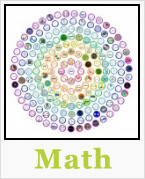



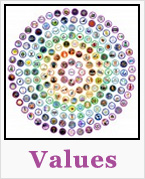
OPEN SOURCE CURRICULUM OUTLINES (click image for summaries and links to complete pages)
CARE
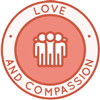
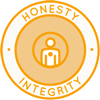
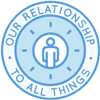
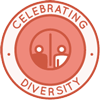
SHARE
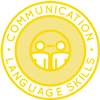
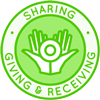

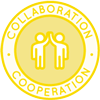
PLAY
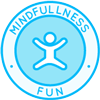
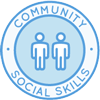
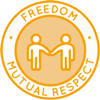
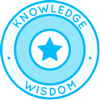
OPEN SOURCE TEACHING METHODOLOGY SUMMARIES
Montessori | Waldorf | Orff | Reggio | Multi-Intelligence | Bloom's Taxonomy | Study Tech | I-WE
INDEX OF ALL THE ONE COMMUNITY OPEN SOURCE LESSON PLANS

Click this image for the Lesson Plans for Life page with links to the rest of the lesson plans
THE WORLD'S LARGEST ONLINE FREE EDUCATION RESOURCE ARCHIVE
RELATED CONTENT AND OTHER RELATED RESOURCES
We're building this resource section. Click here if you have a suggestion or resource for this page.

























 One Community
One Community




